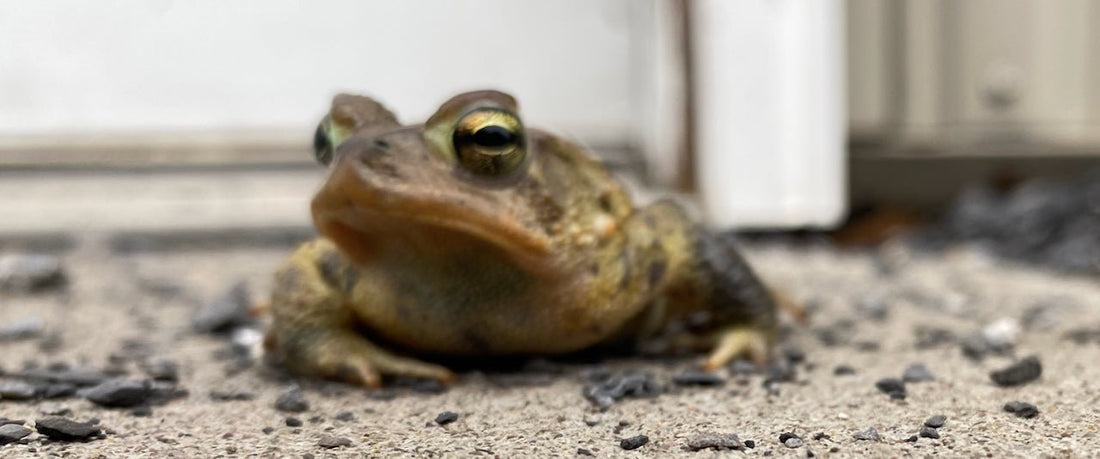My workshop borders the Wallkill Valley Rail Trail, a 22 mile linear park that runs along a former railroad rail corridor. Our little stretch of trail travels through a woody and often wet section populated by magically friendly garden toads who occasionally hop all the way across the lawn and parking lot and wait for me by the door to my shop.
I usually carry them back to the woods but now that spring is officially here, I'm going to add a little garden toad house so they can wait safely. Toad houses offer protection from the sun, predators and my dog, a known toad licker. I don't know if they'll use it. I have long experience with purely aspirational wild creature houses (I'm looking at you bat house!) but I'm hoping this one will work.
It's tempting to move some of these toads to my home garden because they are avid slug eaters and yes, I have slugs. Lots of them. But this is where these toads have chosen to live and instinct will guide them back, no matter how many juicy slugs they find in my distant garden. A small toad bravely hopping back to his home is at considerable risk of death so instead I will fancy up the parking lot and keep my work toads happy and safe in their own backyard.
If You Find a Toad
Observe, Don’t Disturb: If you encounter a toad in your garden, take a moment to observe it from a distance. Toads can get stressed easily, so it's best to avoid handling them. Their skin secretes a substance that can be irritating to some predators, and potentially to humans if not handled properly.
Provide a Water Source: Toads need access to water, not only for drinking but also for their skin's health. Consider placing a shallow dish of water on the ground to help them stay hydrated, especially during hot and dry periods.
Create a Toad Habitat: To encourage the toad to stay in your garden, you can create a simple habitat. This could be a toad house made from a broken pot turned upside down, with a hole big enough for the toad to enter, or a pile of rocks that offers cool, moist hiding places.
Creating a Toad-Friendly Garden
Avoid Chemicals: Toads are sensitive to pesticides and herbicides, which can also reduce their food sources. Use organic gardening methods to protect them and the environment.
Maintain Moisture: Toads thrive in moist environments. Keep your garden well-watered, and consider adding a mulch layer to help retain soil moisture.
Offer Shelter: Beyond a toad house, dense plantings and leaf litter provide excellent hiding spots for toads during the day.
Plant a Variety of Species: A diverse garden attracts a wide range of insects, providing a food buffet for your garden toad.
Handling a Toad
If you must handle a toad, perhaps to move it from a dangerous area, it’s important to do so with care. Always wet your hands before gently picking up the toad to minimize stress and avoid damaging its sensitive skin. Hold it securely but gently, and place it down carefully in a safe location.
When to Seek Help
If you find a toad that appears injured or sick, it's best to contact a local wildlife rescue or rehabilitation center for advice. They can provide specialized care to help the toad recover.
The Importance of Toads in Mythology and Culture
Garden toads also hold a place in various cultures and mythologies, often symbolizing transformation, luck, and protection so I’m pleased they seem to like my shop. It seems like a good omen.
